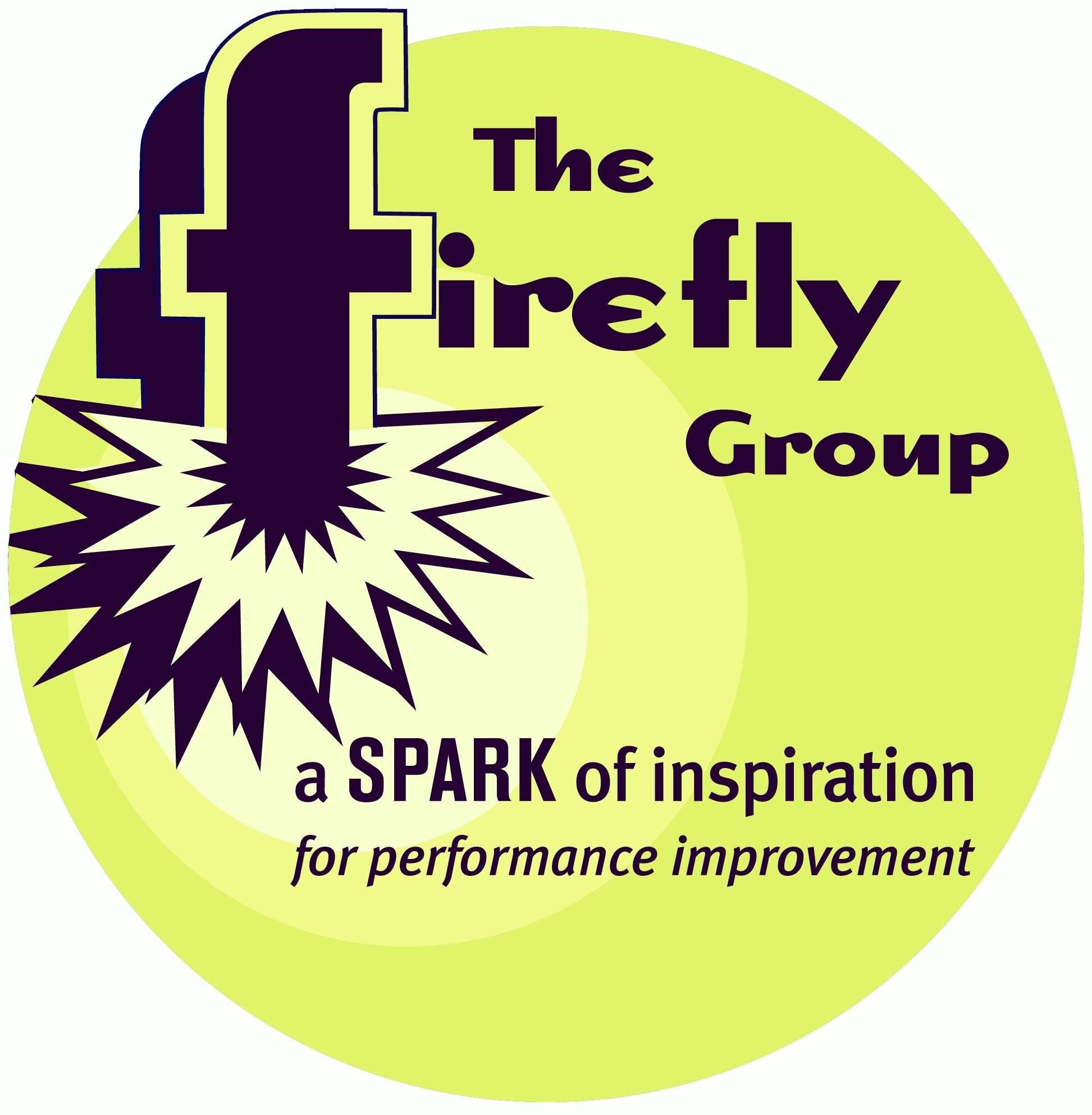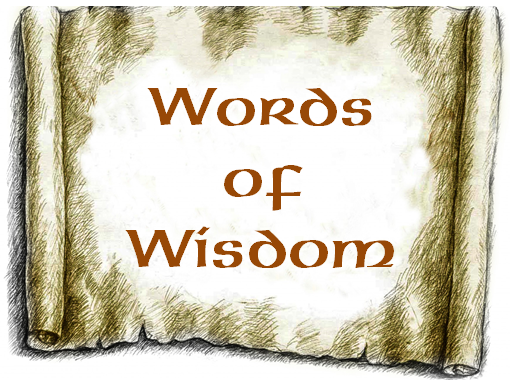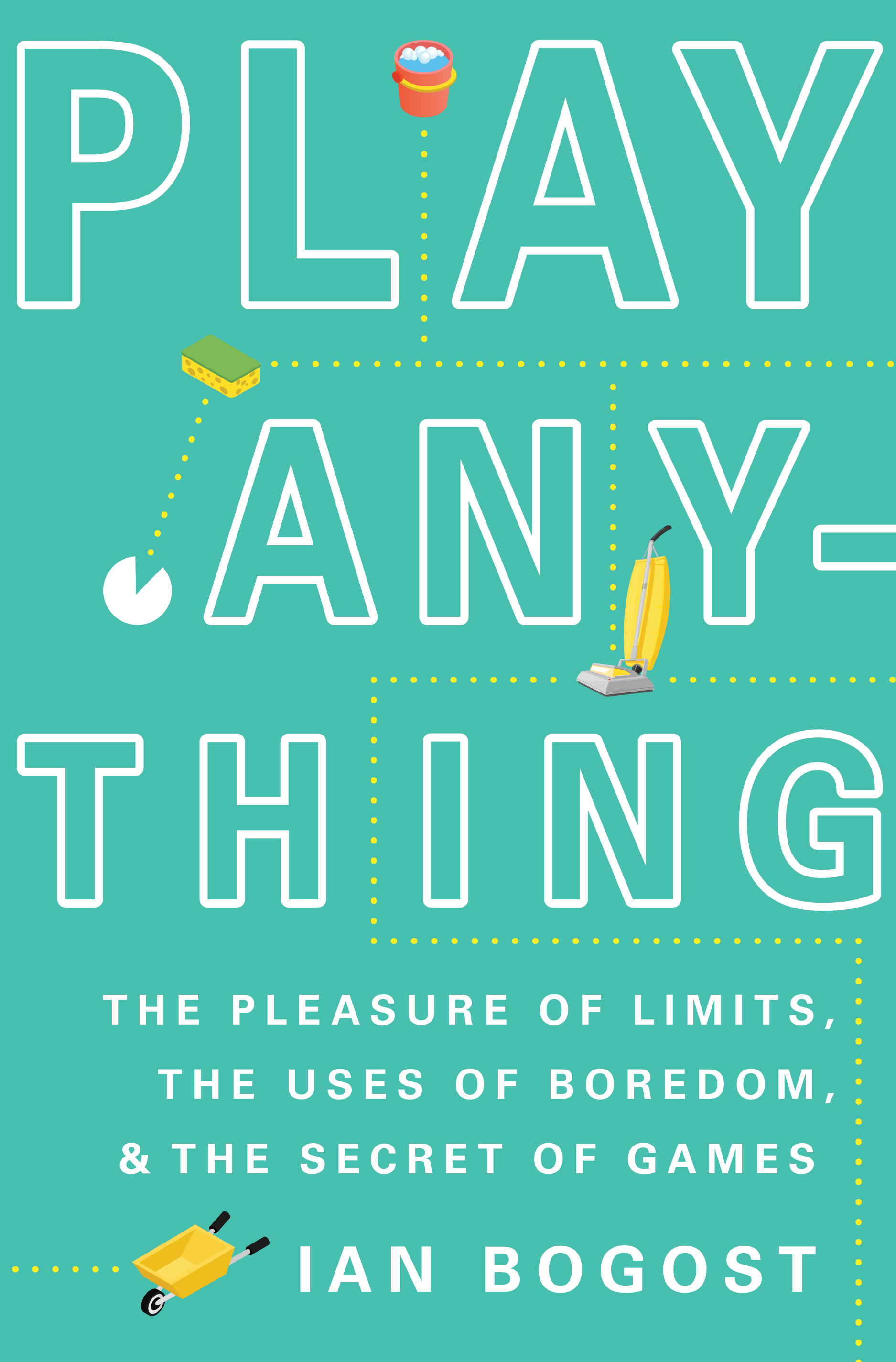

What's New

Words of Wisdom
52
cards and 15 activities to spark conversations and make sense of learning.
Learn more HERE.
What We Do
The Firefly Group helps people make sense of what they learn and experience.
Whether facilitating a group for better decision-making, keynoting a conference, leading a training, or writing an instructional design, we use novel methods that engage, spark creativity, and produce memorable results.
 If
this sounds like a good direction for your organization, let's talk about
how we might collaborate! Please give me a call (802.257.7247) or send an
. - Brian
If
this sounds like a good direction for your organization, let's talk about
how we might collaborate! Please give me a call (802.257.7247) or send an
. - Brian
 Your ETR (Estimated Time to Read): 10 minutes Your ETII (Estimated Time to Implement Ideas): 5 weeks |
What
can you teach with a glass of water and an index card?
Watch my video and find out!
February
2017
|
Say
It Quick |
Discoveries bits of serendipity to inspire and motivate |
Ideas fuel for your own continuous learning |
Activities tips and tricks you can try today |
|
Amazon - Complain or play |
Play Anything - A review of Ian Bogost's book |
We Play - It's what humans do |
Playing with Constraints - Stretch a metahor for learning |
Play All the
Time
More than just a way to have fun, play enables us to have a better understanding
of what we are doing, a deeper engagement with other people, and a more meaningful
way of living. And you don't have to wait for a day off to have a day of play.
Learn more with a review of Ian Bogost's book Play Anything plus additional
ideas about play, an activity, and a 99-Word Story to start things off.
Amazon
As your dugout canoe glides through the mangrove swamp, exotic birds call out in the distance and an alligator surfaces menacingly nearby. Danger and adventure await your discovery at every turn.But wait, this is the Disney jungle tour! Your boat is made of fiberglass and glides along a submerged track. The alligator is rubber. The birds are a recording. You realize this is not at all like the Amazon. Now you have a choice. Do you want to complain about the guide's lame jokes or do you want to pretend?
If you decide to play, you win.
 Play
Anything
Play
Anything
The Pleasure of Limits, the Uses of Boredom, and the Secret of Games
I read this book so now you don't have to.
You can avoid the tediously long-winded run-on sentences replete with esoteric references, overused examples, repetitious concepts, and dubious assertions about how we are hounded by the fear of objects to the point of boredom and eventual play. Punctuated with fragmentary thoughts. Wisps of ideas.
Stylistically, this book is hard to read but to his credit, Ian Bogost in Play Anything, challenges popular notions about play (that we play to have fun), fun (that fun is pleasure), and happiness (that happiness is not found within oneself).
He asserts that…
But to reach these conclusions, Bogost takes the reader through a variety of lengthy (and questionable) arguments. Example: We are driven by a fear of consumer objects (Really, all of us?) to the point that escape from reality is our only option. Instead, we should be embracing our things, exploring their qualities and limits and discovering new ways to interact with them.
Bogost acknowledges the work of others in creativity (Mihaly Csikszentmihalyi), play theory (Stewart Brown), philosophy (Martin Heidegger), happiness (Sonja Lyubomirsky) and positive psychology (Barbara Fredrickson). But rather than finding connections between their work and his own interests, Bogost only recognizes how they fall short of his ideas.
Bogost does not say anything new. He goes to great lengths to describe how other people have thought about play. But then he discredits their ideas because they don't fit with his "more nuanced" definitions of play, fun, and the play space. Instead of expanding upon their thinking, Bogost seems intent on replacing all ideas of play with his own terminology.
But maybe this is just how philosophers play.
They acknowledge the work of other great thinkers then systematically disparage those ideas reducing the discussion to a zero-sum game in which the winner is the latest person to define a new trending terminology that can restate the previous theory.
More Information
Play Anything: The Pleasure of Limits, the Uses of Boredom, and the Secret of Games by Ian Bogost, Basic Books, New York © 2016, ISBN 9780465096503
We Play
Play is what we do in the world.
Whether you are a chemist, musician, poet, biologist, linguist, archeologist, politician, teacher, or psychologist you engage with your environment and the things and people you find there. Every profession has a playground, toys, and people to play with. The job of professionals is to interact with all these elements, test their limits and possibilities, experiment, and explore ways to solve problems or create new, innovative systems.
They play.
But perhaps you don't feel you have much personal choice in your work or day-to-day living. Perhaps you are an administrative assistant, a home care provider, a recycling collector, a babysitter, a retiree, or a parent. You still have a playground (a place you interact) and you can still experiment (play) with the constraints you find there and learn new ways to do your job or to live better.
This is the essence of Bogost's book. We all work within limits. Play is a process of stretching those limits. The fun happens when we meet a challenge, solve a problem, learn something new, engage more deeply with other people, act silly, pretend, or make a difference in the world.
When we understand this, we really can play anything.
For more ideas about play and the important role it has in our personal and professional lives, check out these posts in previous editions of the Firefly News Flash.
- Even a mundane utilitarian activity like stacking wood can be an opportunity for play.
- Innovators routinely rely upon play to help them test constraints in their search for inventive solutions.
- Stewart Brown, author of Play, highlights the critical but overlooked role of play for social development and emotional intelligence.
- A playful approach that capitalizes on curiosity can be an inspiration for more responsible behavior.
Playing with Constraints
Like the 99-Word Story, the opportunity for play, and all its advantages, is found when we engage with situations, people, and things as we find them rather than how we wish them to be. Forced to deal with what we have in the moment our choice is either to complain or to experiment, test, flex, pretend, ask What If, and discover. In other words, we can play.
You can demonstrate this capacity that we all have by leading your group or team in this activity.
Metaphor Stretch

Goal: To demonstrate how play can bring out possibilities from constraints; to gain new insights about a team problem or issue
Materials: A photograph showing an ambiguous activity. (CLICK to download the photograph shown here.)
Participants: Any number
Time: 20 minutes
Preparation: DOWNLOAD the photograph shown here and print it or project it so everyone can see it at the same time. Identify an issue or problem that you would like the group to consider, solve, or reflect upon.
Procedure:
Display the image you have chosen.Ask people to work with a partner or in groups of three to make as many observations and assumptions about the photo as they can. For example, they can ask and answer questions such as where the photo was taken, who is shown, what is the man doing and why. Additionally, they might make statements like "a man is sitting in the street," or "the man is not concerned about the traffic."
After a few minutes, invite people to share a sampling of their observations and assumptions.
Next, ask people to think about the issue or problem that you previously identified. Describe it briefly and explain that you would like people to consider this issue or problem in a new way. Ask them to make connections between their observations about the photo and the issue or problem. Challenge them to stretch their thinking and make an expansive list of analogies.
By making this challenge, you are inviting people to play with their assumptions, to work within constraints as they look for connections to the situation you have identified.
After a few minutes, ask people to share the analogies they identified and lead a discussion using some of the following questions.
Discussion:
- Which analogies do you find most compelling or relevant?
- What new insights have you gained about the chosen situation?
- How difficult was it to connect your observations of the photo with the situation?
- What made this activity easy and what made it challenging?
- What new observations do you have about working within constraints?
- How can limitations and constraints be used to improve creativity?
- What are some similarities between working within constraints and experimenting, bending the rules, or playing with ideas?
- What other opportunities do we have to play within the constraints within our organization or team?
By the way, this photograph will work to bring deeper insight to any problem, issue, or situation. Why? Because our brain's constant search for meaning combined with our natural inclination to play with constraints insures that we will always be able to find connections among different stimuli. That's the power of a metaphor!
When you play with this activity, what you discovered!
|
Whether you need a keynote speaker, or help with strategic planning, performance improvement, or training facilitators and trainers in your organization, I look forward to your call (802.380.4360) or . -- Brian |
Read previous
issues. Click Library!
To add or delete your name to our mailing list, email
with a short note in the subject line.
I want this newsletter to be practical, succinct, and thoughtful. If you have suggestions about how I can meet these criteria, please let me know! Send me an with your thoughts and ideas.
Home
| Services | Products
| Mission | Ideas
| The Group | The
Buzz
(c)
2016 The Firefly Group